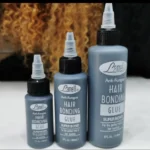
In the ever-evolving world of fashion and beauty, where trends shift like the wind and creativity knows no bounds, a curious and unconventional term has surfaced—“doorknob hair.” The first time you hear it, you might imagine an obscure reference to hairstyles or perhaps even an avant-garde fashion statement. But what exactly is doorknob hair? Is it a real trend? Does it have historical or cultural roots? This article will explore the concept of doorknob hair in depth—its meaning, possible origins, and its impact on beauty culture.
What is Doorknob Hair?
On its surface, “doorknob hair” might sound like a whimsical metaphor, but digging deeper, it has been used to describe a variety of things. Primarily, it refers to the kind of hair that is easily tangled, messy, or frayed, often reminiscent of the way strands might get caught on a doorknob. In other cases, it can be applied to a specific styling choice that incorporates unconventional shapes or elements into a hairstyle, evoking the circular or geometric design of a doorknob itself.
The name is striking because of its uniqueness, yet it leaves room for creative interpretations. From a literal standpoint, hair that resembles a doorknob or is styled to be voluminous and spherical has been seen on avant-garde runways and in experimental hair artistry. Symbolically, it also carries the notion of hair that is prone to getting “stuck” or “caught,” much like how strands of hair can snag on everyday objects, including doorknobs.
Doorknob Hair as a Metaphor for Tangles and Snags
The term “doorknob hair” may first resonate with anyone who has ever dealt with the frustration of tangles and knots. For many, especially those with longer or textured hair, getting strands caught on objects is a daily struggle. Walking by a door and having a lock of hair catch on the knob or latch is a relatable experience. This common yet annoying scenario could be the inspiration behind the term, symbolizing hair that is prone to being unruly, hard to manage, and constantly getting into awkward situations.
In beauty communities, particularly on social media platforms like TikTok and Instagram, the phrase has taken on a life of its own. People post humorous content about the “doorknob hair struggle,” highlighting the universal truth of how hair can seem to have a mind of its own, often at the most inconvenient moments. Whether it’s getting caught on the edge of furniture or tangled in zippers, “doorknob hair” has come to be a playful term that encapsulates the quirks of living with certain hair types.
Doorknob Hair in Avant-Garde Fashion
Beyond the metaphorical meaning, doorknob hair has entered the world of high fashion and hairstyling in a much more literal sense. Avant-garde hair stylists, especially those working in runway shows and editorial shoots, have embraced bold, sculptural styles that challenge traditional beauty norms. For these artists, hair is not merely a natural part of the body to be styled—it is a medium through which art can be expressed.
Some stylists have used the concept of doorknob hair to create spherical or rounded shapes on the head. These hairstyles resemble large, bulbous orbs that defy gravity and push the boundaries of what hair can do. Such styles might be created using wigs, extensions, or padding beneath the hair to give it volume and shape. Accessories resembling knobs or even miniature door fixtures have also made appearances in editorial photoshoots, lending a surreal, fantastical element to the overall look.
In this context, doorknob hair is less about tangles and frustration and more about challenging the status quo of what a “normal” hairstyle should be. It’s about thinking outside the box and embracing playfulness and absurdity, qualities that are often celebrated in avant-garde fashion.
Historical and Cultural Roots of Unconventional Hairstyles
Unconventional hairstyles are not a new phenomenon. Throughout history, hair has been used as a form of self-expression and a way to communicate status, identity, or political views. From the towering wigs of 18th-century European aristocrats to the bold, geometric cuts of the 1960s Mod era, hair has always had a unique role in fashion and culture. In this light, the concept of doorknob hair can be seen as part of a larger historical tradition of experimenting with hair.
In many cultures, elaborate hairstyles are a symbol of beauty, status, or ritual significance. For example, the intricate braids of the Himba people of Namibia or the ornate hairpieces worn in Japanese geisha culture demonstrate the cultural importance of hair as an art form. While these examples are rooted in tradition, the avant-garde movement seeks to push boundaries even further, often drawing inspiration from history while creating something entirely new and sometimes shocking.
The rounded, voluminous shapes associated with doorknob hair can even be compared to the elaborate hair rolls and buns found in historical styles, such as those of ancient Rome or China, where hair was often shaped into intricate, architectural forms. In these cases, hair was not just about aesthetics but also conveyed meaning, such as marital status, age, or social rank.
The Rise of Doorknob Hair in Pop Culture and Social Media
In recent years, social media has become the birthplace of countless trends, both in fashion and beauty. Doorknob hair, though still a niche concept, has gained traction through platforms like Instagram and TikTok, where influencers and hairstylists showcase their bold and often humorous takes on the style.
On TikTok, users frequently post “hair fails,” many of which involve hair getting caught in everyday objects, including doorknobs. This has sparked a viral trend of people humorously referring to their tangled hair as “doorknob hair.” Influencers often play into the exaggerated frustration of these scenarios, turning an everyday annoyance into something comedic and relatable.
Additionally, experimental hairstylists have used the platform to showcase gravity-defying doorknob-inspired styles. Some have taken inspiration from geometric shapes and turned them into wearable art, while others have incorporated actual doorknob-like objects into their designs. This melding of high fashion and internet humor is a testament to how beauty trends can emerge from unexpected places.
Practical Concerns: Managing Doorknob Hair in Daily Life
For those who see doorknob hair as less of a creative style and more of a daily struggle, there are practical solutions to manage tangles, knots, and frizz. Haircare routines designed to prevent snags, breakage, and damage are essential for anyone with “doorknob hair” tendencies.
- Regular Conditioning: Keeping hair well-moisturized can prevent the dryness that often leads to tangles. Using a deep conditioner or leave-in treatment can make hair smoother and less prone to catching on objects.
- Detangling Products: There are plenty of products on the market specifically designed to make combing through tangles easier. These include detangling sprays, serums, and oils that reduce friction and make the hair more manageable.
- Protective Hairstyles: For people with longer hair or textured hair, protective styles such as braids, twists, or buns can keep hair secure and less likely to snag on things like doorknobs.
- Use of Accessories: While avant-garde fashion may embrace the doorknob aesthetic, in everyday life, accessories like scrunchies, headbands, or hair clips can help keep hair under control and out of harm’s way.
- Regular Trims: Split ends and frayed hair are more likely to tangle and catch on objects. Regular trims can help maintain the health of the hair and reduce the risk of it becoming unmanageable.
The Future of Doorknob Hair
While doorknob hair may have started as a metaphor or humorous commentary on everyday hair struggles, it has since evolved into something far more layered and dynamic. Whether it’s the playful interpretation of tangled hair or the avant-garde stylistic choice to emulate the shape of a doorknob, this quirky term has proven that beauty and fashion are ever-changing and open to interpretation.
In the future, we may see more people experimenting with unconventional hairstyles that push the boundaries of what is considered beautiful or stylish. With social media driving many of these trends, it’s possible that doorknob hair, in all its forms, will continue to captivate and inspire. Whether you see it as a fashion statement, a metaphor for hair woes, or just a fun internet trend, doorknob hair has secured a place in the ongoing conversation about beauty and self-expression.
Conclusion
Doorknob hair may have started as a humorous way to describe the common annoyance of tangled hair, but it has grown into a symbol of creativity and experimentation. From avant-garde runway shows to social media humor, doorknob hair reflects both the frustration and the joy of dealing with hair that has a mind of its own. As beauty continues to evolve, doorknob hair represents the limitless possibilities of how we think about and style our hair, blending the practical with the whimsical in ways that are as unpredictable as hair itself.

